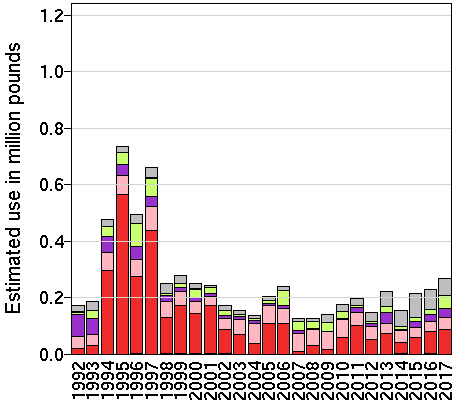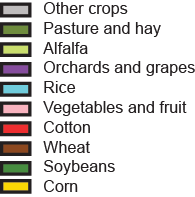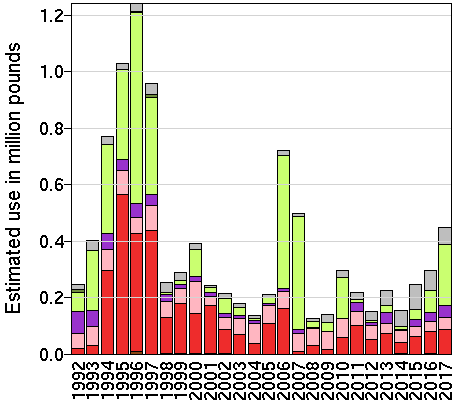Naled
nay-lehd
Used on alfalfa, cotton, and other crops. Registered as a U.S. pesticide in 1989. Reregistered in 2006. Currently under registration review.
Overview
Naled is used in 6 states.
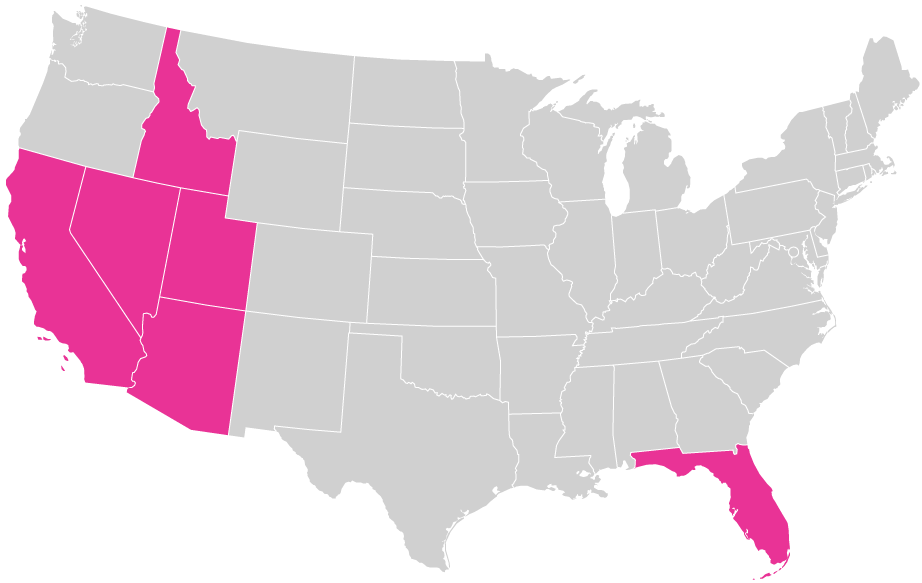
Naled is used in Arizona, California, Florida, Idaho, Nevada, and Utah.
Data is not available for Alaska, D.C., Hawaiʻi, and U.S. Territories. Data represents the most recent year available from USGS. Details.
See detailed maps of naled usage by state and county.
Human Health Effects
Even at low levels of exposure, naled can lead to serious negative health effects.
Neurodevelopmental Harm
Reproductive Toxicity
High Risk Exposure Routes
People are exposed to naled through food and drinking water, even if they don’t live near areas where pesticides are sprayed. Details.
Food and/or Drinking Water
FarmworkersPeople performing post-application activities in previously treated fields, but do not directly apply pesticides themselves. Details.
Pesticide HandlersPeople involved in pesticide application process. Details.
Residential BystanderPeople who live near areas where pesticides are applied. Details.
Spray Drift
Wide Area Public Pest Control
Naled rapidly metabolizes or degrades to dichlorvos (DDVP) in food, drinking water, and the environment. (See figure.) Additional sources of DDVP from the presence of naled (DDVP + naled), include: Food and/or Drinking Water, Pesticide Handlers, Residential Bystander, Spray Drift, and Wide Area Public Pest Control.
Percentage of Crops
Naled is applied on food widely grown and consumed in the United States.
Safflower (75%)
Strawberries (45%)
Registered Uses
Where EPA allows naled to be used.
Agricultural Crops: alfafa, cotton, fruit and vegetables, orchards and grapes, other crops
Livestock Feedlots / Pastures / Rangelands
Non-Crop Forest/Shade Trees, Shrubs, and Flowering Plants
Greenhouse Roses and Ornamentals
Indoor Commercial Settings
Outdoor Commercial Settings
Outdoor Bait Traps
Wide Area Public Pest Control
Additional Information
DDVP, Trichlorfon, and Naled
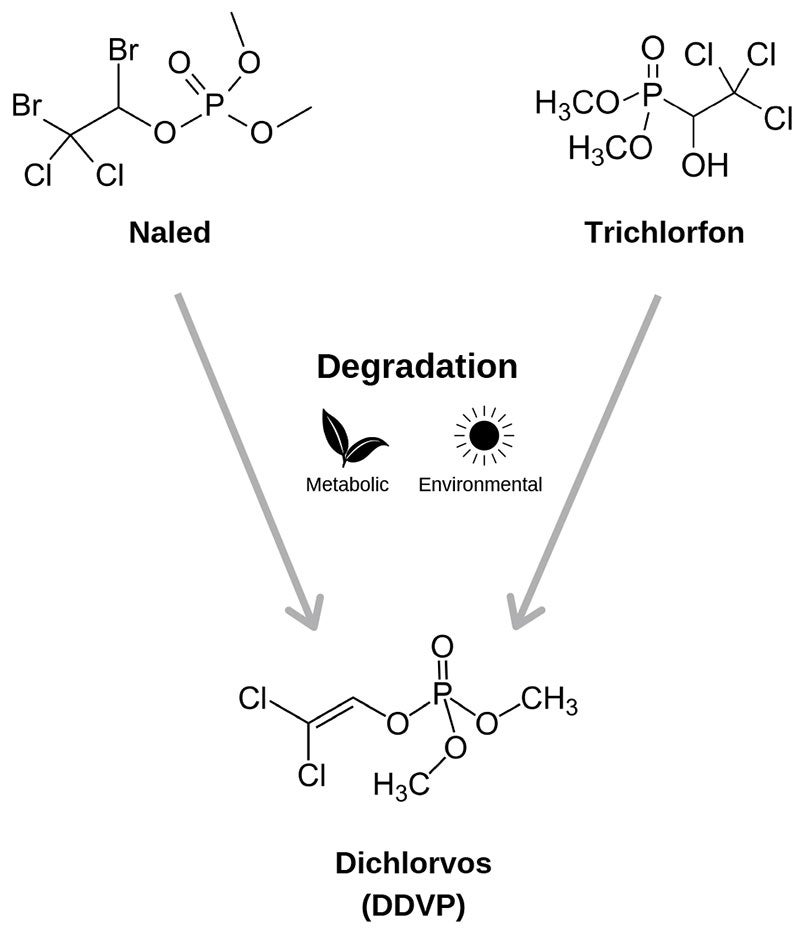
The organophosphate pesticides trichlorfon and naled are rapidly metabolized or degraded to dichlorvos (DDVP) in food, drinking water, and the environment.
Therefore, the U.S. Environmental Protection Agency accounted for additional sources of DDVP from the presence of trichlorfon and naled in food and drinking water in its risk evaluation of DDVP.
In this database, we represent these additional sources of DDVP as “DDVP + trichlorfon” and “DDVP + naled.”
EPA did not expect occupational or residential exposures to DDVP from the use of trichlorfon or naled, and excluded these exposure pathways from the DDVP risk evaluation.
Estimated Use of Naled on Crops
Most recent agricultural crop usage data as provided by the U.S. Geographical Survey’s Pesticide National Synthesis Project. Does not reflect universal usage of naled. (How do EPest-low and EPest-high differ?)
U.S. Tolerances Categories & Commodities for Naled
The U.S. EPA sets maximum residue limits — known as “tolerances” — on the amount of naled that may remain in and on foods. The tolerance is the residue level that triggers enforcement actions.
Tolerances have been set for naled for: Agricultural Commodities. Maximum residue limits have been set for naled by the U.S. EPA for the following commodities:
Beans
Beet
Broccoli
Brussels Sprouts
Cabbage
Cauliflower
Collards
Cotton
Cucumber
Eggplant
Grape
Grapefruit
Hops
Kale
Legumes
Lemon
Melon
Orange
Peas
Pepper
Pumpkin
Safflower
Spinach
Squash
Swiss Chard
Tangerine
Tomato
Turnip
Walnut
U.S. EPA Human Health Risk Assessments for Naled
Human Health Risk Assessments are conducted by the U.S. EPA to estimate the nature and probability of harmful health effects in people who may be exposed to pesticide. They are used to make informed decisions about approving new pesticides and new uses of registered pesticides, and during our regular review of existing pesticides. Read the assessment for naled.
